A 'Calm Down' kit
You don't always have to be the one to help your child calm down. Keep a box of sensory materials to hand and your child will reach for them in times of trouble.
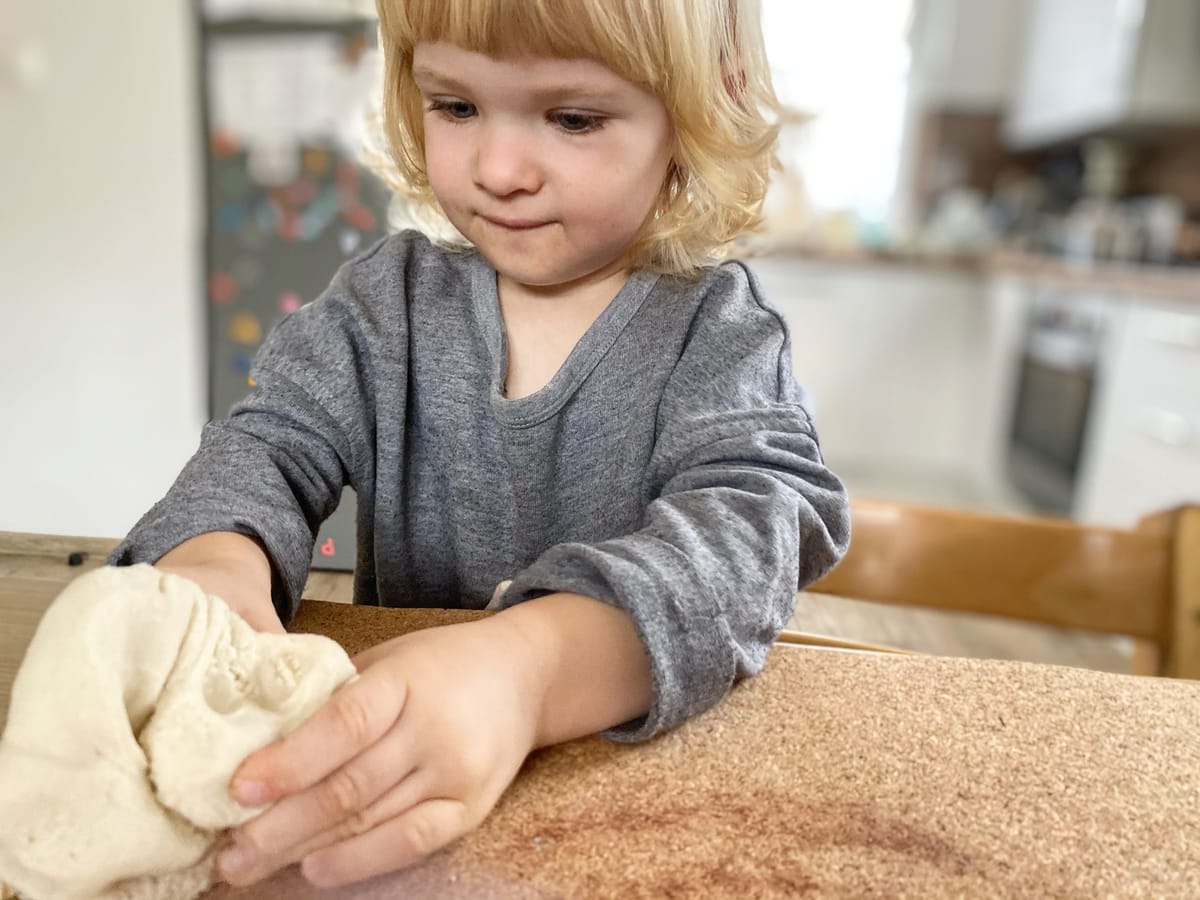
Help your child self-regulate with sensory play
How do you soothe your child when she is angry or upset?
A hug and some quiet time always works.
But, as we grow, we have to learn ways to calm ourselves down. There won't always be a friendly adult around to co-regulate, to help us take a few deep breaths and regain our poise.
I created The Play Tools as techniques to help your child self-regulate and get back to play. They were designed to be used in a few seconds. A quick trick to restore equilibrium.
But techniques and habits take time to learn, so here's an idea to bridge the gap between you co-regulating and leaving your child to manage her feelings alone.
The Calm Down Box achieves the same goal by offering a variety of helpful objects that invite soothing sensory play.
Think of the box as the entry point to The Play Tools. First, you learn to calm yourself through play, then you do so using only your mind.
By assembling a ’Calm Down Kit’ filled with sensory materials and soothing activities, you provide your child with tools she can employ whenever she feels overwhelmed. Your ‘kit’ could be a box or a shelf or nothing more than a collection of objects interspersed amongst the rest of your child’s playthings. Just make sure it’s easy to reach.
Keep it simple
You don’t have to recreate the Calm Down Kit in full. Instead, think of it more as a prompt to evaluate your child’s play space. Are there calming things she can turn to in moments of stress or is the room filled with overly-stimulating gadgets and games?
Small changes like these can transform the energy levels in a boisterous home.
More peaceful for your child; less peacekeeping for you.
Note: The Play Tools are techniques that can help your child self-regulate and get back to play. The** Calm Down Box** achieves the same goal by presenting a variety of helpful objects instead. Think of the box as the entry point to The Play Tools. First you learn to calm yourself through play, then you do so using only your mind.
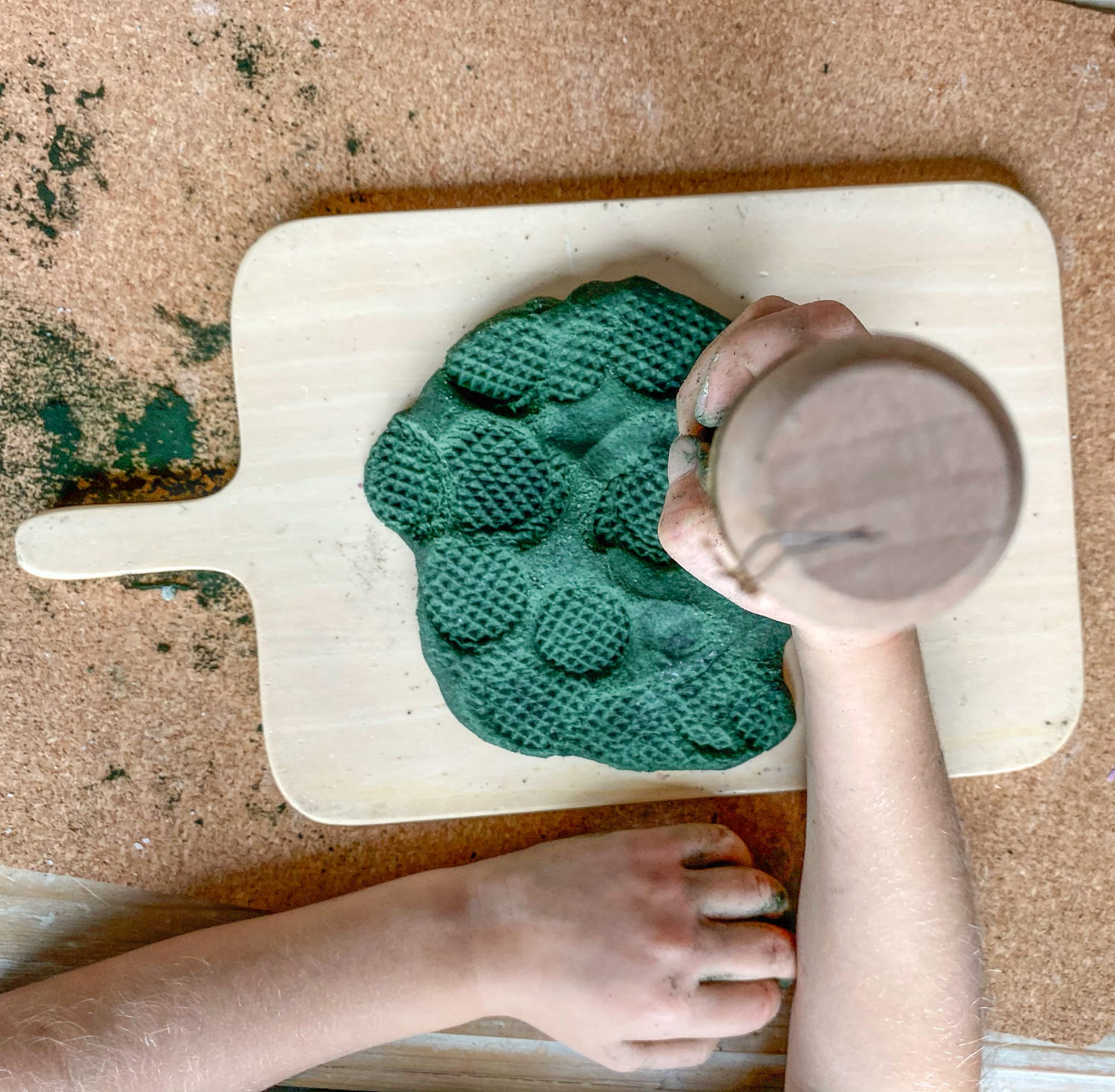
Items to include in the calm down kit
- Play dough or stress balls. Squeezing and moulding play dough or stress balls help release tension and provide tactile stimulation. Scenting the dough with lavender for multisensory calm.
- Fidget toys. Fidget spinners, infinity cubes, stretchy bands. These keeps hands busy, improve focus and reduce anxiety.
- Sensory bottles. Clear plastic bottles filled with glitter, beads, or coloured water. Watching the slow movement inside the bottle is mesmerizing.
- Soft textures. Stuffed animals, soft blankets, or plush fabric squares. Touching soft materials provides comfort and a sense of security.
- Colouring materials. Colouring books, mandala patterns, crayons, or coloured pencils. There's a reason so many mindful colouring books have been sold.
- Breathwork tools. Pinwheels, paper fans, or a feather. These tools encourage slow, mindful breathing. Ask your child to blow gently, which promotes calm and controlled breaths.
- Natural materials. Smooth stones or shells. Have you ever held a handful of cool, smooth stones in the palm of your hand? There's something hypnotic about the way they slide together. Holding pebbles gives your child something to focus on and be distracted by.
- Mini sandbox or kinetic sand. Moulding and pressing sand - and letting it run through your fingers - is unbeatable for down-regulating the nervous system.
- Calming music or white noise. Have you ever noticed how stressful noisy rooms can be? It's even more difficult for your child. Silence, of course, has the opposite effect. I've never used a Yoto player but, preloaded with the right music, they could be very effective. An old phone with a soothing playlist works just as well.
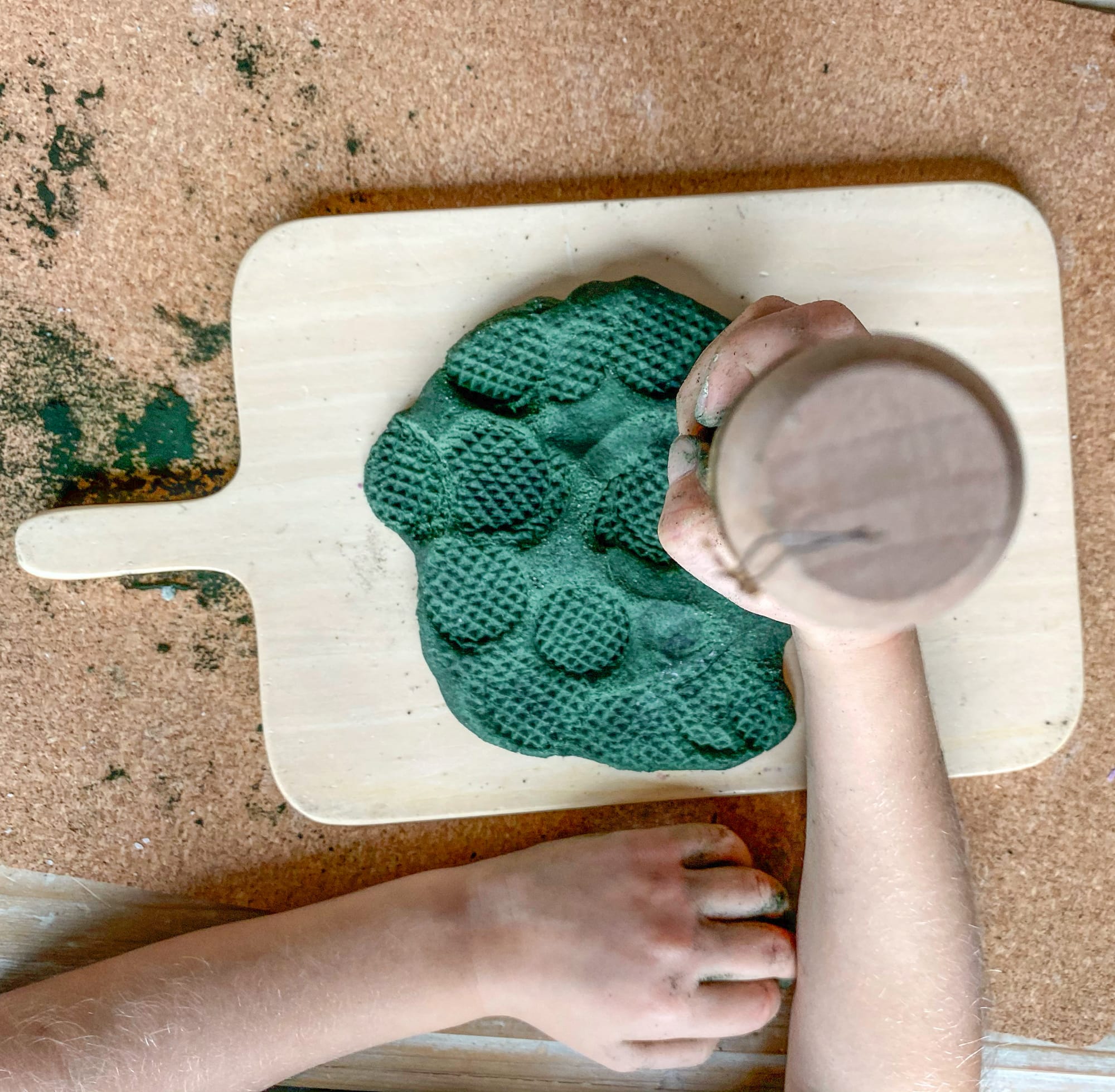
Bonus idea: ‘heavy work’
‘Heavy work’ involves pushing, pulling, lifting, or squeezing - movements that give the body strong sensory input through the muscles and joints. Often used in Sensory Processing Disorder (SPD) treatment, heavy work helps children feel grounded, calm, and focused by providing deep pressure and resistance. These activities can be an excellent addition to the Calm Down Kit, especially for children who tend to feel overstimulated, struggle with self-regulation, or need help managing big emotions.
Try these heavy work activities
- Therapy putty or resistive clay. Squeezing and stretching a dense, resistive putty is a simple way to engage in heavy work for the hands, helping your child to focus and self-regulate.
- Stretchy bands or resistance bands.
- Benefit. Pulling or stretching a resistance band gives proprioceptive feedback that helps with focus and grounding. Children can wrap it around their hands or knees and gently pull, creating repetitive, calming movements.
- ** Move heavy things**. When I was a preschool teacher, we had large, hollow wooden blocks that the children could use to construct ramps, dens and all kinds of fortifications. You probably don't have these at home but you can use the next-best thing: furniture. Perhaps your child could help to move chairs at mealtimes or carry books from one bookcase to another?
- Squeeze ball or grip strengthener. Squeezing a firm ball or grip strengthener helps release tension and provides pressure input to the hands and wrists, calming children who need a way to focus their energy.
In the Play with Purpose house, I try to avoid formal activities where possible. We have exercise bands lying around, a squeezy avocado and a few pots of therapy clay. The children are instinctively drawn to them in moments when they need to calm down.
Best of all, I get the children to do housework. And because they view it as an adult’s work, they love to pitch in.
Try the following:
- Take out the rubbish
- Sweep and mop
- Vacuum
- Carry the shopping from the car to the kitchen
- Take the laundry basket to the washing machine
NOTE: If you have a child with SPD (or one who simply finds it hard to switch off), try a weighted blanket. It can work wonders at night if she has trouble settling.
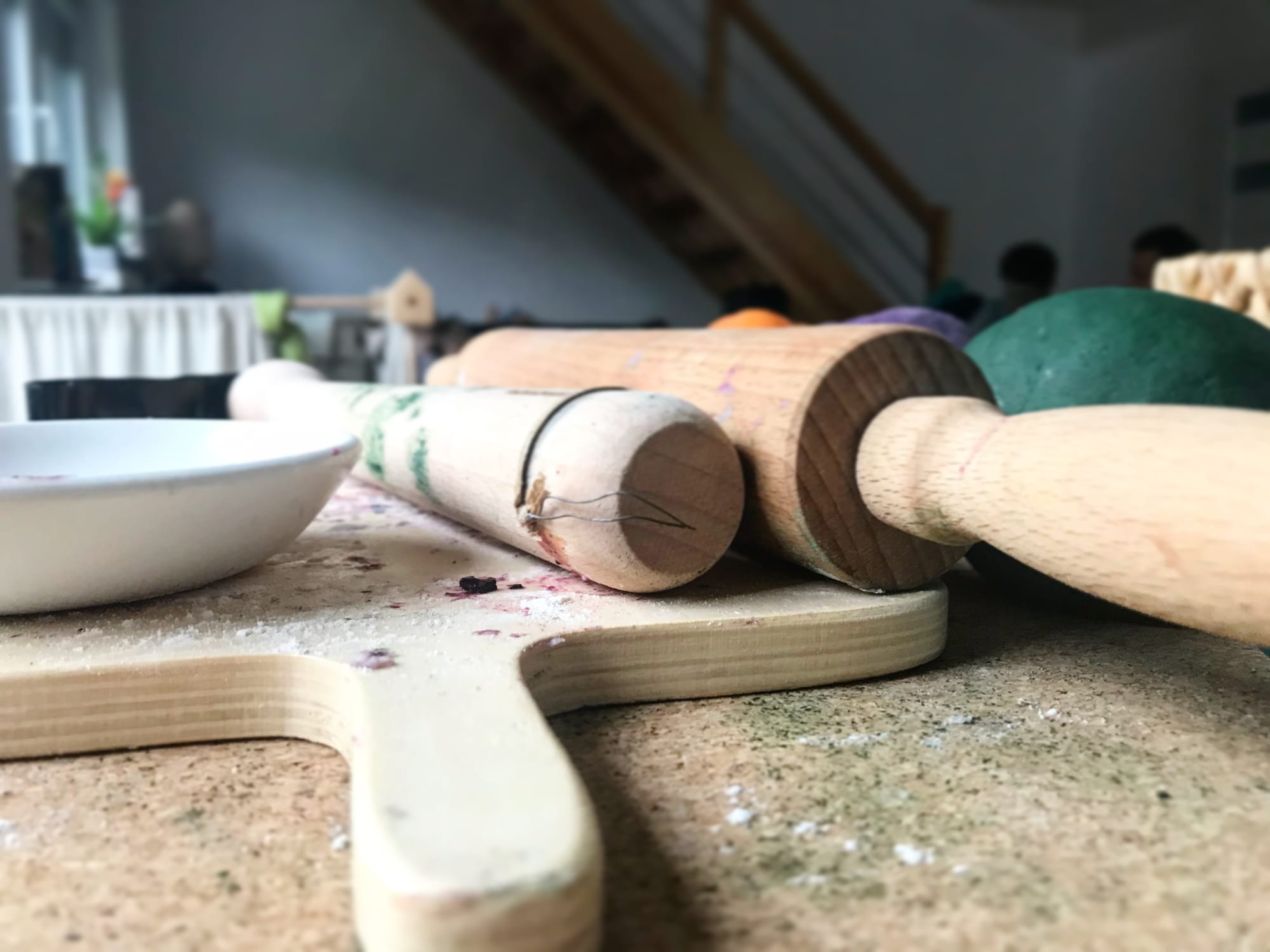
Assembling the kit
Choose a container and make it accessible. You may need more than one box. We don’t have one at all. I prefer to spread the materials around the home, though as a teacher I found it easier to keep a few select objects on a tray.
Teaching your child to use the kit
I’m not a big fan of talking directly about interventions I am introducing to help my children. I think it makes them defensive - and feel bad about themselves. Rather than saying, “Here’s a Calm Down Kit to use when you’re angry”, I prefer to talk about myself, hoping that my child will make the connection.
Do you ever just put your hands into sand and just squish it? It’s so relaxing. I forget all about my day and how busy I am. I just like to hold it and press it and let it run through my fingers.
Oh! You do, too? That’s so nice. We like so many of the same things. Sour sweets, football…
You know the other thing that helps me when I’m stressed? I like to breathe deeply. Best of all, I like to blow things, like pin wheels and feathers and ping-pong balls. Have you ever tried that?
Yes, you’re right, there is a pin wheel in that box. How did I miss it. Shall we give it a blow?
This kind of approach takes a bit more work but it feels much more positive.
Tips
- Update regularly. Replace items occasionally to maintain interest.
- Keep it simple. Don’t put everything in at once. Too many items can be overwhelming. Pick a few favourites and see how you go.
Stimming tools
Stimming, or self-stimulatory behaviour, involves repetitive actions like tapping, rocking, or humming. It’s common among children with sensory processing differences and can help manage emotions, relieve stress, or provide calming sensory input. For some, stimming is essential for self-regulation in overwhelming environments.
Try these if your child needs something repetitive to calm down:
- Stress balls or therapy putty
- Sensory bottles and liquid timers (a cross between a rain stick and a lava lamp)
- Rainmakers
- Chewable toys
- Spinners and other fidget toys
These tools offer satisfying sensory feedback, giving children effective options to self-soothe and regulate their emotions independently.
Final word
Keeping a variety of sensory play materials to hand offers your child to the chance to self-regulate on her own terms and in her own time. She will be naturally drawn to them in times of stress and will feel empowered as she learns that she can control her emotions and responses independently.
And there's less firefighting for you.
Win-win.
Further reading
If you found this idea helpful, you might enjoy "The Out-of-Sync Child Has Fun" by Carol Stock Kranowitz, which offers activities for kids with sensory processing challenges, or "Sitting Still Like a Frog" by Eline Snel for mindfulness exercises tailored to children.
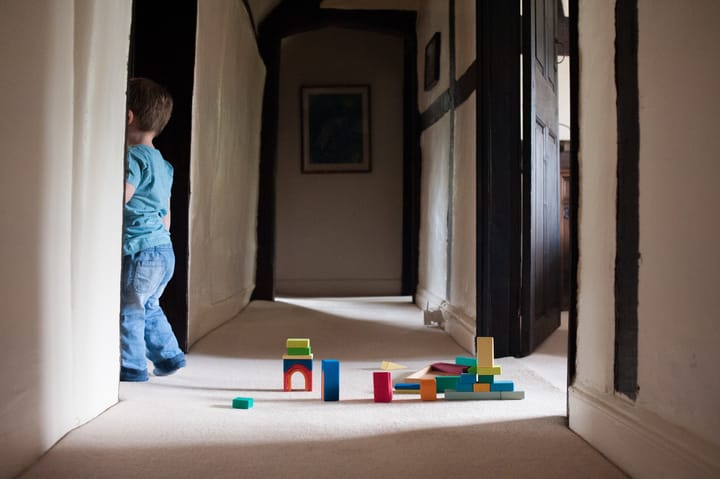
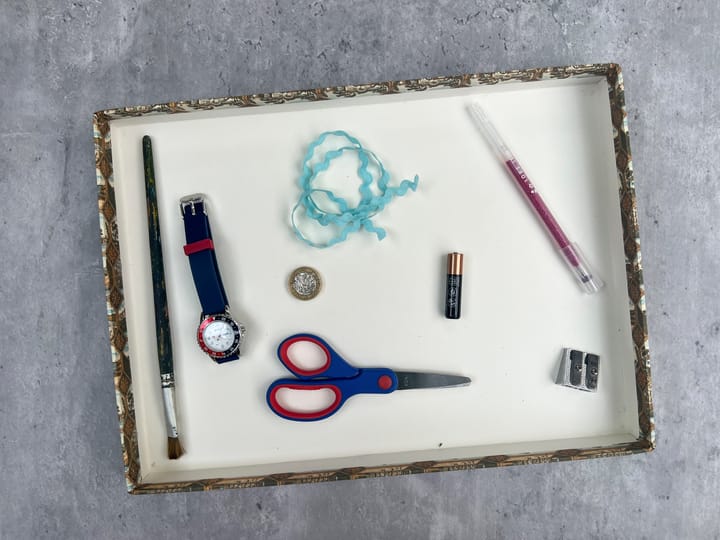
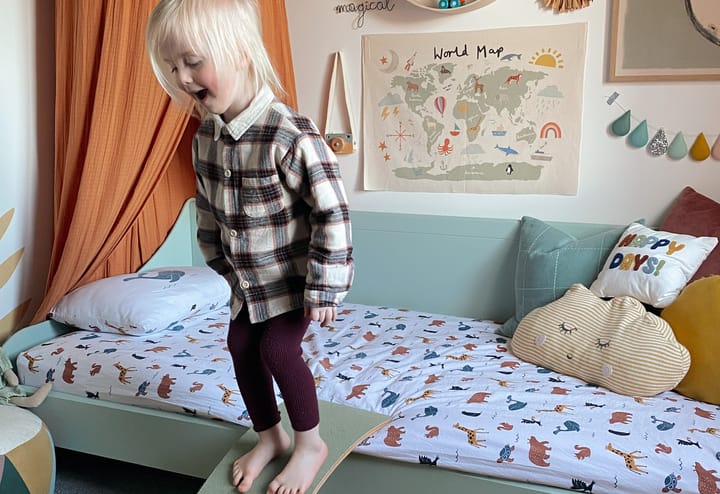
Comments ()